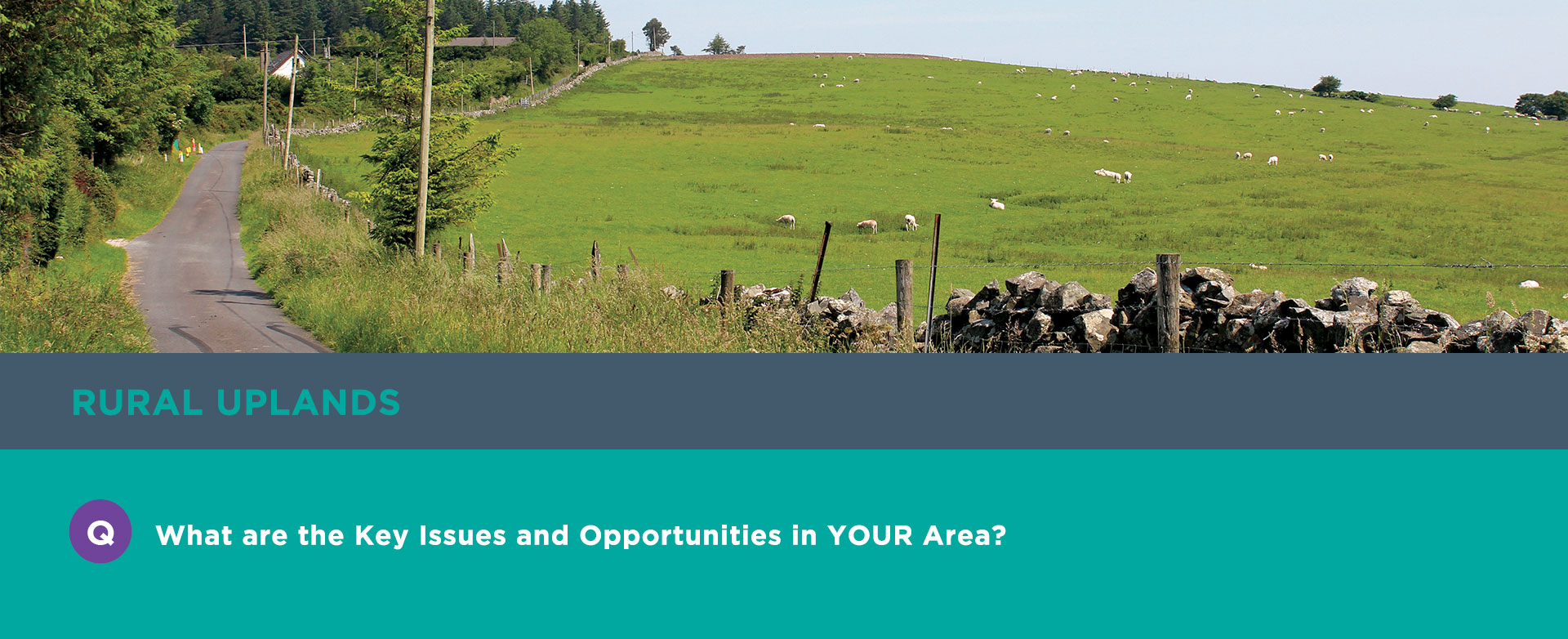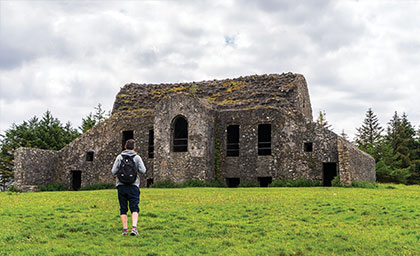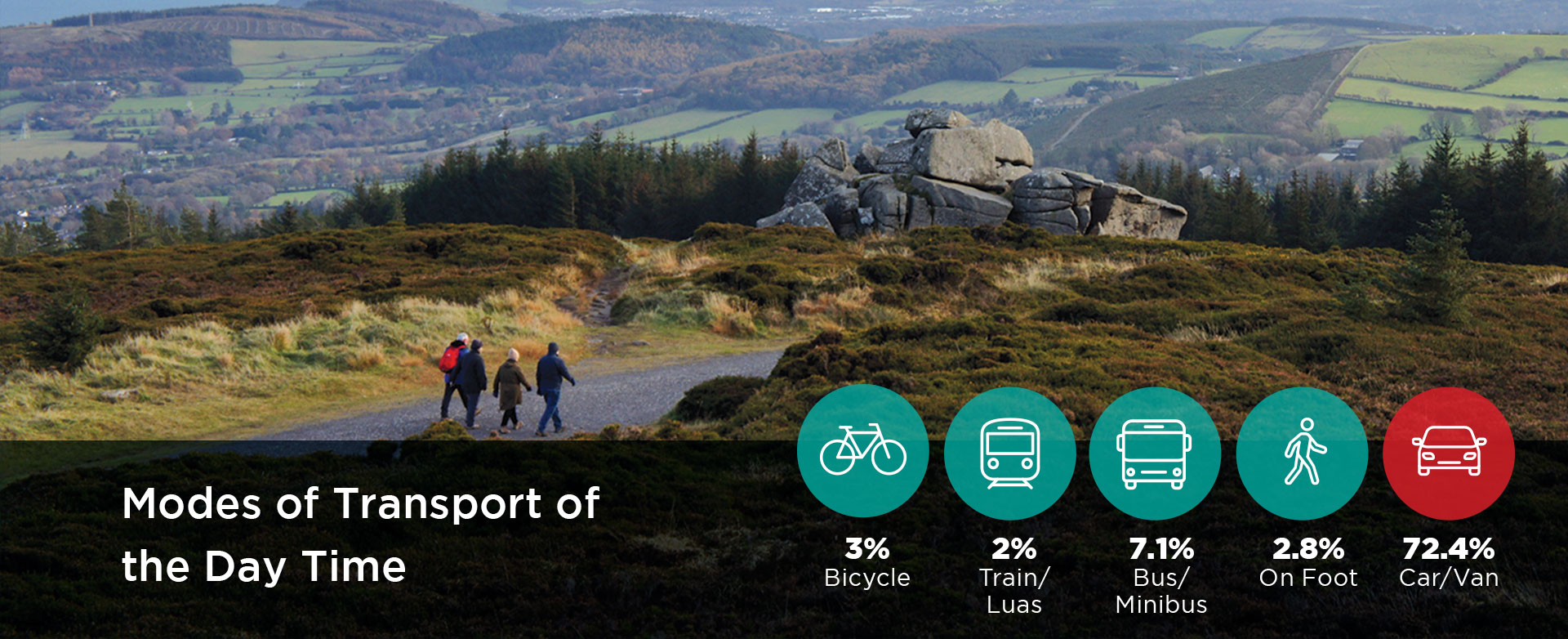Rural Uplands

Introduction
Built Environment & Placemaking
Climate Action & energy
Population Growth & Housing
Sustainable Movement
Community Services
Economic Development & Employment
Natural Heritage & Biodiversity
Infrastructure & Utilities
Introduction & Context
The Rural Uplands Neighbourhood is generally known as the Dublin Mountains, extends from Rockbrook in the east, adjacent to the M50, to Badgerhill in the west. The southernmost point of the county stretches to the southern slopes of Kippure, 27km from Dublin City. The area consists of small rural cluster settlements such as Glenasmole and Redgap and the larger settlement of Brittas. The N81 national secondary route dissects the county from Brittas to link with the M50 main orbital route.
The rural landscape features places of scenic and natural beauty alongside popular amenity areas. This rural upland area provides a green belt buffer between the built-up area of Dublin and the rural settlements.
The Dublin Mountains have a high landscape value and sensitivity being partially designated as a Special Area of Conservation (SAC), Special Protection Area (SPA) and proposed Natural Heritage Area (pNHA).
Built Environment & Placemaking
The rural/upland area can be identified by its agricultural and rural/upland setting and associated environmental, economic and amenity values. The built environment in this area consists primarily of the villages of Brittas and Glenasmole, farmhouses and agricultural buildings, clusters and single rural housing and other economic/tourism enterprises. The rural sense of place is rooted in the community, through families and community connections, through the long-standing experience of meitheal, and in the local history and heritage of the area and the people who formed it. It will be important to retain and strengthen the strong sense of place that already exists in the communities in this neighbourhood, and support them by providing the necessary physical and community supports that are needed to ensure these communities thrive, and that their unique contribution to the landscape character of this area continues into the future.


ClimateAction & Energy
The new Plan will support sensitive rural diversification responsive to the surrounding environment. Diversification, such as tourism around new forestry plantations can play a role in the transition to a low carbon, climate-resilient economy and society. Green Infrastructure will also have a role to play in climate mitigation and adaptation in this area.

The South Dublin Climate Action & Energy Plan recognises that agriculture is an important aspect of life, playing a vital role in the livelihoods of some residents within this area. The new Plan will support sensitive rural diversification responsive to the surrounding environment. Diversification, such as tourism around new forestry plantations can play a role in the transition to a low carbon, climate-resilient economy and society. Green Infrastructure will also have a role to play in climate mitigation and adaptation in this area.
Population Growth & Housing

Sustainable Movement
The N81 is the national secondary route traversing the western part of this area connecting to Dublin City via Dublin Bus. The Dublin Bus Service has been enhanced to Brittas. The promotion of public transport initiatives such as the Local Link Kildare South Dublin which delivers rural public transport services on behalf of the National Transport Authority will be key to the delivery of more sustainable movement patterns within this area.

Services
This area of the county is bolstered by its people and the communities that live there. The remoteness and isolated locations draw communities closer together to give a sense of camaraderie. Community centres contribute towards this. It is an objective to work towards improving the quality of life of these communities and residents and to encompass social inclusion and integration in all current and future plans.

Education Facilities play a key role in the creation of sustainable communities. The Department of Education is responsible for delivery of educational facilities throughout the county, facilitated by the Council.
Economic Development

Employment opportunities in the rural/uplands area are centred around rural enterprises, extractive industries, agricultural developments and amenity facilities.
Two of the key pillars of Realising our Rural Potential: The Action Plan for Rural Development 2017 relate to supporting rural enterprise/employment and maximising rural tourism and recreational potential. Rural Diversification opportunities are vital for sustaining a viable rural economy.
The Development Plan will be required to include policy and objectives to ensure that this area capitalises on its potential while protecting the environmental assets that define its character and value.
Natural Heritage and Biodiversity

The River Dodder and Glenasmole Valley is designated as a Landscape Character Area within the Landscape Character Assessment of South Dublin County (2015). This area is highly scenic with extensive views over Dublin and has a rich biodiversity with high ecological value. The area has significant archaeological clusters dating from Neolithic and Bronze Age.
The Rural Uplands boasts European Designations in Glenasmole Valley SAC for its Orchid-rich Calcareous Grassland, Molinia Meadows and Petrifying Springs and Wicklow Mountain SPA which is an important breeding and foraging ground for Merlin and Peregrine. The area is also partially designated as a pNHA.
Built Heritage
The rural uplands area provides a rich and diverse architectural and historic environment, comprising of a number of protected structures and identified national monuments/places. Within
the rural uplands there are a number of farmhouses, demesne, agricultural buildings and vernacular structures which provide varied building styles and richness to the architectural quality of the area.

Existing Clachans and vernacular structures within this area are important to the architectural development of the rural landscape and also in providing an understanding to traditional building methods and materials. Any new development should be sensitive to the existing landscape and should reflect the local vernacular quality and materials of the area.
Infrastructure & Utilities

Mountain water run-off is a critical challenge facing this neighbourhood which requires a Water Management Scheme. The Glenasmole Valley is sensitive to this water run-off and potential impacts for ground water contaminants, due to the location of Bohernabreena waterworks. Developing the Green Infrastructure network will aid in this challenge.

Back to the Top